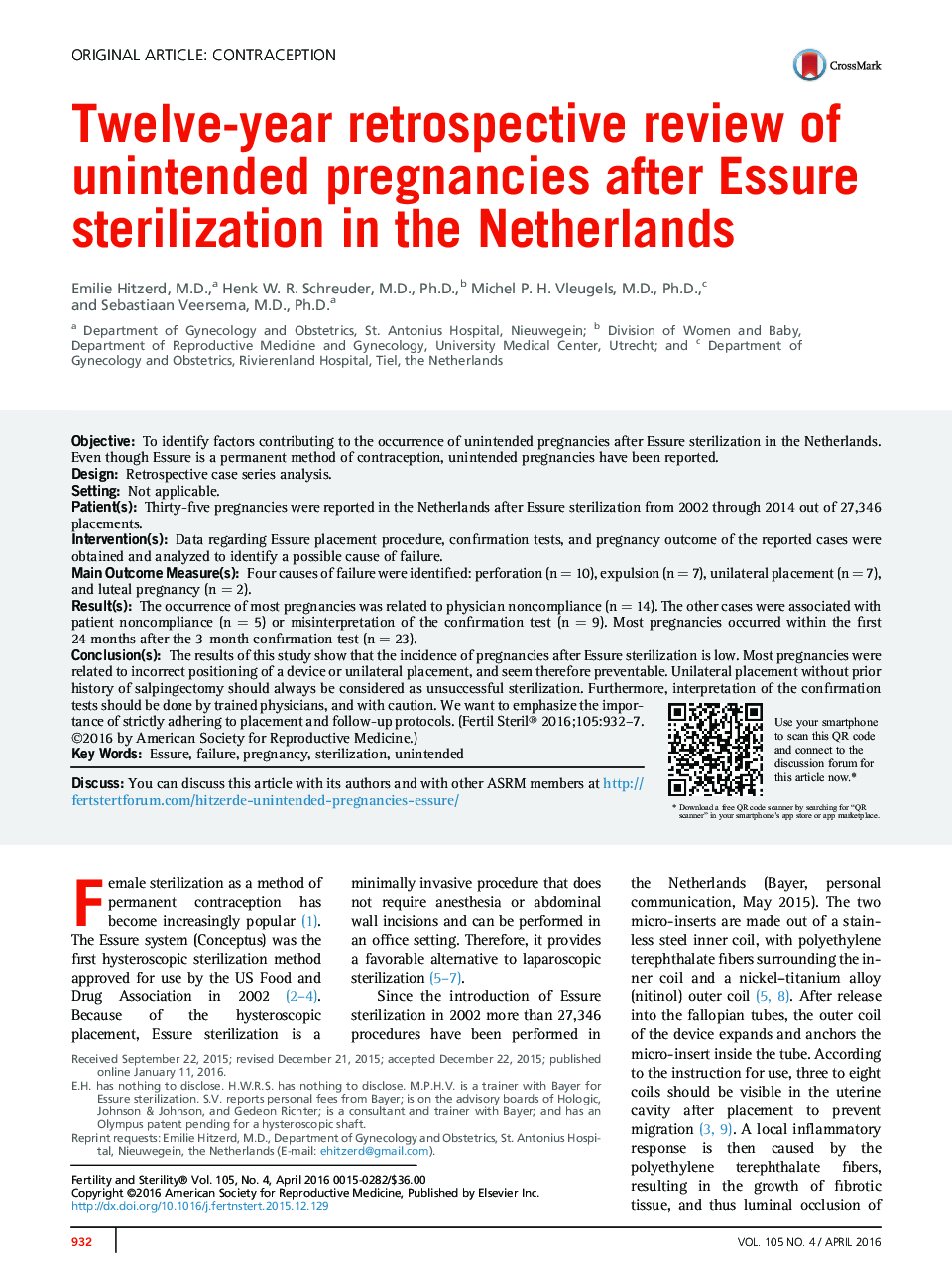| Article ID | Journal | Published Year | Pages | File Type |
|---|---|---|---|---|
| 3935373 | Fertility and Sterility | 2016 | 6 Pages |
ObjectiveTo identify factors contributing to the occurrence of unintended pregnancies after Essure sterilization in the Netherlands. Even though Essure is a permanent method of contraception, unintended pregnancies have been reported.DesignRetrospective case series analysis.SettingNot applicable.Patient(s)Thirty-five pregnancies were reported in the Netherlands after Essure sterilization from 2002 through 2014 out of 27,346 placements.Intervention(s)Data regarding Essure placement procedure, confirmation tests, and pregnancy outcome of the reported cases were obtained and analyzed to identify a possible cause of failure.Main Outcome Measure(s)Four causes of failure were identified: perforation (n = 10), expulsion (n = 7), unilateral placement (n = 7), and luteal pregnancy (n = 2).Result(s)The occurrence of most pregnancies was related to physician noncompliance (n = 14). The other cases were associated with patient noncompliance (n = 5) or misinterpretation of the confirmation test (n = 9). Most pregnancies occurred within the first 24 months after the 3-month confirmation test (n = 23).Conclusion(s)The results of this study show that the incidence of pregnancies after Essure sterilization is low. Most pregnancies were related to incorrect positioning of a device or unilateral placement, and seem therefore preventable. Unilateral placement without prior history of salpingectomy should always be considered as unsuccessful sterilization. Furthermore, interpretation of the confirmation tests should be done by trained physicians, and with caution. We want to emphasize the importance of strictly adhering to placement and follow-up protocols.
